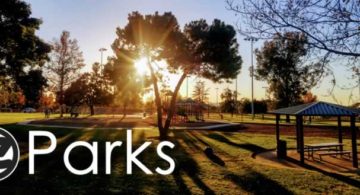Improvements Continue at City of San Bernardino Animal Shelter

New leadership makes swift progress with staffing, health and safety as top priorities
San Bernardino, CA – The wellbeing of the City of San Bernardino Animal Shelter continues to be a top priority for City leadership. In the last six weeks, significant progress has been made to improve the conditions at the shelter and Interim Manager Lt. Frank Macomber is working diligently with the City to streamline the hiring process for shelter staff, improve facility maintenance and address immediate health and safety issues for the animals and the public.
“The progress our shelter leadership and staff are making to improve the conditions at our City’s animal shelter illustrate a commitment to offering the best service possible,” said City Manager Andrea Miller. “It is critical for the City to make at times tough, yet important, operations and budget decisions so that we can repair and rebuild a shelter that is independently sustainable and capable of providing the highest level of care for animals. Rather than criticizing the progress we are making, we need all of our constituents including our volunteers, rescues and networkers to help us educate the public about the importance of spaying and neutering and the responsibility associated with lifetime pet ownership.”
Below are the details of recent shelter improvements.
Hiring Shelter Staff: Increased support for our understaffed shelter has been critical to make considerable progress. One new animal shelter attendant started on Sept. 11 and three additional shelter attendants will start on Nov. 13, Nov. 19 and in December (date TBD). One new cadet has also been assigned to Animal Control and covers multiple shelter duties. In addition, a recruitment campaign is underway with goals to fill six eligible animal control officer positions, four animal shelter assistant positions and five part-time animal shelter attendant positions. At the completion of this latest recruitment effort, the shelter aims to be fully staffed and able to fulfill all of the required duties with or without the assistance of volunteers. The City strongly encourages interested applicants with a clean record who can pass a background examination to apply for the positions.
Health and Safety: The City is working diligently to address immediate health and safety issues at the shelter to ensure the highest standard of care possible is provided for the animals and that the City is in compliance with laws and regulations.
- Disease-prevention fencing – New fencing has replaced the worn and broken barrier that was in the courtyard. Proper fencing now protects the animals by reducing potential cross-contamination originating from people touching multiple animals without washing their hands and safely quarantines sick animals.
- Commercial-grade appliances – The purchase and installation of a new high-volume and high-efficiency dishwasher and washer/dryer set increases the level of cleanliness and the ability to sanitize items, thus reducing the potential spread of disease through dishes, towels and bedding.
- Protective Custody Kennel – Compliance issues previously noted by the Veterinary Medical Board (VMB) are now in the process of being resolved with the installation of new drain covers and vapor barriers, or privacy fencing. These improvements are critical to control the spread of contagious disease and reduce the stress levels of animals, especially those with mental health issues that require limited stimulation.
- Shelter dog beds – The shelter no longer allows fabric pet beds. This decision was made following the advice of reputable veterinary professionals to prevent bacteria and viruses from harboring in the bed threading, which poses a hazard to animals. In addition, this measure reduces the health complications associated with dogs that ingest contaminated fabric. Blankets, which are laundered and sanitized, are provided for elderly and injured animals. When temperatures get cold, all animals are provided with blankets. It’s important to note that the shelter is equipped with geothermal flooring and overhead heaters.
Euthanasia: Legal parameters and the influx of animals brought into the shelter at any given time dictate decisions regarding whether or not an animal is euthanized. Laws and best practices limit the City’s ability to find suitable adopters for animals that are sick, injured or aggressive. Adoption is determined on a case-by-case basis. The adopters of these types of animals must sign a waiver form that informs them that they are responsible for all of the costs associated with any medical attention and/or any unpredictable behavior that the animal may exhibit. The decision to euthanize is determined by a veterinarian, team of staff members and shelter management. A recent report provided by the shelter shows that in September 2014, 324 animals were euthanized. This number has decreased over the years and in September 2018, 119 animals were euthanized. The animals were euthanized for the following reasons alone:
- Feral – It is illegal for the City to adopt feral animals to the public and very few rescues have the licensing to adopt feral animals.
- Medical – Some animals need medical care that exceeds the $90 allocation per animal.
- Injured – An animal is mercifully euthanized if it is experiencing irremediable suffering such as a broken back.
- Observed Behavior – It is illegal for the City to adopt an animal that has been determined a biter or fearful with a tendency to bite.
- Behavior History – These animals were seized from the owners by Animal Control Officers with a documented bite report or they were strays and bit someone.
- Too Young – It is illegal to adopt out puppies and kittens who are still nursing as well as those that are brought to the shelter without a mother. Legally, the City is unable to even hold these animals overnight.
- Contagious Disease – We are unable to adopt sick animals to the public due to the threat to the City’s entire population of healthy animals.
Facility Maintenance: As part of the shelter’s long-term facility improvement plan, proactive measures to test the facility for mold and other structural issues are underway. In addition, we are working diligently to improve the overall appearance of the facility and this includes regular grounds keeping and landscaping, trash and debris removal and vermin control.
Supplies: The City is in the process of establishing Purchase Orders for shelter food and medicine. This allows staff to purchase and stock as needed to properly care for the animals without reliance on volunteers or company donations.
Finances: An audit of veterinary services showed cost overruns in excess of $4,000 each month. A solution with keen monitoring has been implemented and will now result in an annual cost savings of approximately $50,000, which can be reallocated to other shelter needs.
As this analysis and effort to improve the shelter are underway, we intend to continue to identify and correct deficiencies. Due to the sensitivity of these issues and interest in the matter, we will continue to update the public on our progress.
























